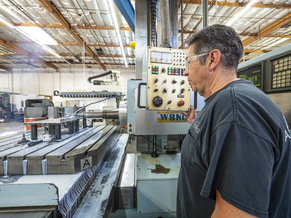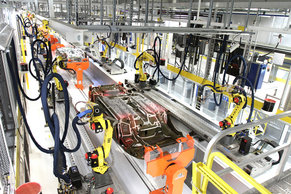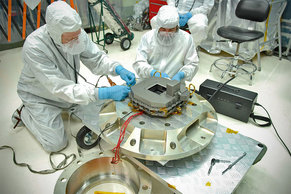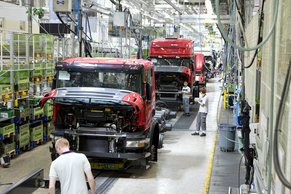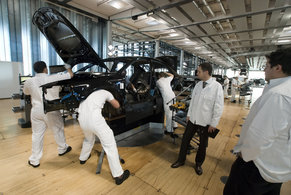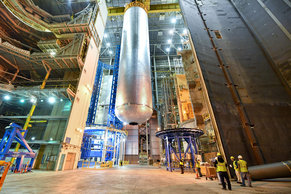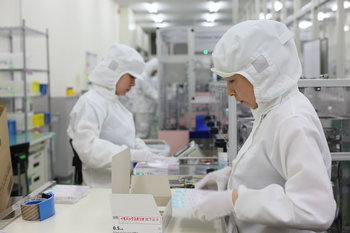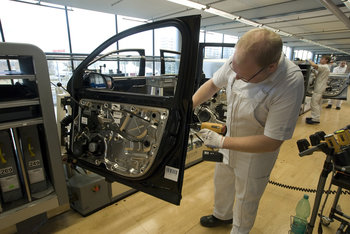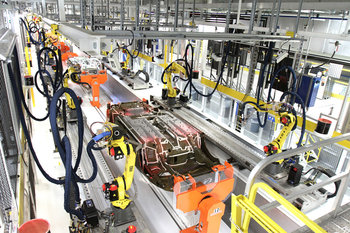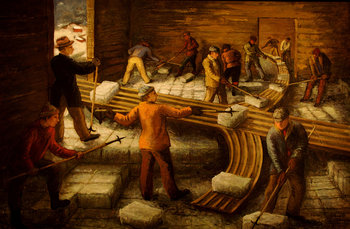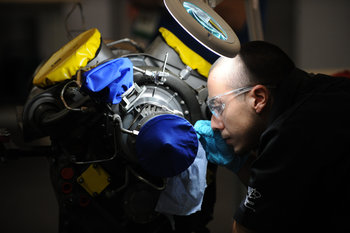
Manufacturing
The ability to produce identical parts at scale with machines such as a screw-cutting lathe was one of the factors that lead to the industrial revolution and mass production. Assembly lines produce items such as cars by adding identical parts in a series of steps.Software
Software is commonly architected into components or services such as microservices. This allows thousands of software developers to work on the same problem without getting in each other's way. Software commonly has millions of lines of code. This would be unthinkably complex without interchangeable parts.Technology
It is common for technical components such as ethernet cards to be standardized. Data centers may view technical components and computing units as interchangeable parts. When a machine malfunctions a new one is swapped in.Maintenance
When a car breaks down, a mechanic orders identical parts to repair it. They may also swap out large components such as the entire engine where the component has become too complex to repair.Discontinued Parts
Parts that are no longer mass produced may be produced from specifications using techniques such as injection molding and 3D printing. In some cases, manufacturers offer services to reproduce old parts as they have access to the required specifications.Reuse
Used parts can be used to repair or restore machines and vehicles. In some cases, hobbyists will produce original designs from used parts.Labor
Industries may standardize roles and processes so that thousands of employees all play the same role. These roles may also be standardized across an entire industry with techniques such as professional certifications.Education
In many cases, a society and education system is oriented towards producing standardized skill sets.Design
Industrial minimalist design under the mantra of form follows function that produces undecorated concrete structures filled with small identical rooms.
Advantages
The following are common advantages of interchangeable parts:Dividing work to many people. | Specialization of labor whereby parts are made by individuals with unique skills. |
Specialization of supply whereby parts are made by firms with unique competitive advantages. | Interchangeable parts allows for the design and production of extremely complex things by breaking the complexity into relatively simple parts, components, services, subsystems and systems. |
Assembly lines and production at scale. | Lowering unit cost with economies of scale. |
Creates competition between suppliers. This tends to lower cost and increase quality. | Allows firms to diversify their supply chain to get the same parts from multiple suppliers. |
Allows for maintenance and repair as parts can be replaced. | Allows for upgrades such as a mobile device that allows you to swap in more memory when you need it. |
Gives consumers choice as multiple firms offer the same parts. | Allows for reuse. |
Disadvantages
Considered a basis for the industrial revolution that transformed the world into a industrial civilization including features such as the military industrial complex with corresponding changes to culture, way of life and history. It can be argued that industrial firms view labor as interchangeable parts and that this type of thinking has commoditization the human experience. Likewise, governments may view populations as interchangeable parts. For example, standardization of education to produce workers who are "interchangeable" because they have standardized skill sets.Notes
It seems likely that we are approaching a post-industrial world that is able to produce unique things at scale such that the dominance of interchangeable parts could be challenged. For example, it may become common for people to use apps to design their own products that are custom manufactured at scale to be unique.| Overview: Interchangeable Parts | ||
Type | ||
Definition (1) | Parts and components that are identical for practical purposes. | |
Definition (2) | The practice of designing things with various systems, subsystems, services, components and parts that can be interchanged with equivalents. | |
Significance | Considered one of the organizing principles of the industrial revolution. Interchangeable parts is also an organizing principle of modern industrial civilization and relatively new industries such as information technology. | |
Related Concepts | ManufacturingMass ProductionAssembly LinesReuse | |

